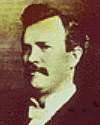
On 28 Jan 1855, William Seward Burroughs was born, the American inventor who produced the first practical adding machine. He invented a mechanical device to do arithmetic chores. Today, dear reader, you likely have a cellphone or wristwatch, which weighs a fraction, gives results in a fraction of the time, and costs a fraction when compared to Burroughs’ device. But don't let that belittle Burroughs’ accomplishment. In his time he provided bank clerks with the ability to add numbers accurately, and print out the results. He died only a few years after establishing the successful company, which by merger became Unisys in the 1980s. By answering the need to calculate in his time, Burroughs set in motion an industry that now produces the cellphone in your time.
The article, The Burroughs Adding Machine from the book The City of Detroit, Michigan, 1701-1922 (1922) says “There is no story in American industrial history more absorbing, more replete with human interest…” Also, there is a sad contrast between the fortunes of the city of Detroit then, when compared to now, when the centre of innovation has moved to Silicon Valley. Which gives another dimension as you read this article.

On 28 Jan 1884, Auguste Piccard was born, Swiss-Belgian physicist who explored both the great heights of the upper stratosphere and also the great depths of the sea in ships of his own design. His twin brother, Jean-Felix, born of course on this same day, also made stratospheric balloon ascents, complementing Auguste's research of cosmic rays. Today's book pick is: Between earth and sky, by Auguste PICCARD who reveals in his own words his motivation, how he accomplished his astonishing achievements and the valuable data he gathered. Several decades before space travel, he explored the limits of previously inaccessible heights and depths.
It is available from Amazon, typically about (As of earlier time of writing - subject to change.)
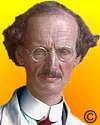 | As to rocket ships flying between America and Europe, I believe it is worth seriously trying for. Thirty years ago persons who were developing flying were laughed at as mad, and that scorn hindered aviation. Now we heap similar ridicule upon stratoplane or rocket ships for trans-Atlantic flights. |
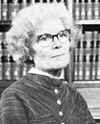 | A crystal is like a class of children arranged for drill, but standing at ease, so that while the class as a whole has regularity both in time and space, each individual child is a little fidgety! |
 | Man is an artifact designed for space travel. He is not designed to remain in his present biologic state any more than a tadpole is designed to remain a tadpole. |
| Before you look at today's web page, see if you can answer some of these questions about the events that happened on this day. Some of the names are very familiar. Others will likely stump you. Tickle your curiosity with these questions, then check your answers on today's web page. | |
| Births | |
 | Dame Kathleen Lonsdale, born 28 Jan 1903, was a British crystallographer who developed several X-ray techniques for the study of crystal structure. Her experimental determination of the structure of the benzene ring by x-ray diffraction, which showed that all the ring C-C bonds were of the same length. She also measured the internal C-C-C bond angles. What size is the C-C-C bond angle in benzene? |
| Deaths | |
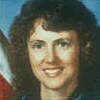 | An American teacher (1948-1986) was chosen to be the first private citizen in space. Aboard the space shuttle Challenger, she was one of the seven astronauts killed when the rocket exploded 73 seconds after takeoff. Can you name this astronaut? |
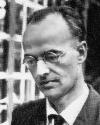 | Emil Klaus Julius Fuchs was a physicist who fled from Nazi Germany to Britain, where he was naturalized in 1942, and joined the British atomic bomb research project. From 1943 he worked on the atom bomb with the Manhattan Project at Los Alamos, U.S.A. For what is Klaus Fuchs most remembered? |
| Events | |
 | On 28 Jan of a certain year, after a number of years of denial, a U.S. government study conceded that cancer and premature deaths of workers at 14 nuclear weapons plants since WW II were caused by radiation and chemicals. According to the Energy Secretary, “This is the first time the government is acknowledging that people got cancer from radiation exposure in the plants.” In which decade did the U.S. government publicly admit that cancer deaths of nuclear weapons workers were caused by radiation exposure. |
 | On 28 Jan 1896, the first motor car speeding fine in Britain was handed out to Walter Arnold, for exceeding the legal speed limit by 6 mph, while driving through the town of East Peckham in Kent. In 1896, what was the legal speed limit for motor cars within residential areas in Britain? |
Fast answers for the previous newsletter for January 27: USS Nautilus • Charles Lutwidge Dodgson • first U.S. astronaut to walk in space • birds • decade including the year 1926 • soil.
 If you enjoy this newsletter, the website, or wish to offer encouragement or ideas, please send feedback by using your mail reader Reply button.
If you enjoy this newsletter, the website, or wish to offer encouragement or ideas, please send feedback by using your mail reader Reply button. Your click on a Facebook, StumbleUpon, or other social button on the site webpages is also a welcome sign of appreciation. Thank you for using them.
© This newsletter is copyright 2020 by todayinsci.com. Please respect the Webmaster's wishes and do not put copies online of the Newsletter — or any Today in Science History webpage. (If you already have done so, please remove them. Thank you.) Offline use in education is encouraged such as a printout on a bulletin board, or projected for classroom viewing. Online, descriptive links to our pages are welcomed, as these will provide a reader with the most recent revisions, additions and/or corrections of a webpage. For any other copyright questions, please contact the Webmaster by using your mail reader Reply button.
--
If you do not want to receive any more newsletters, Unsubscribe
To update your preferences and to unsubscribe visit this link
Executive Real Estate Business Class
-
"It was like a man with wings. It wasn't like anything you'd see on TV or in a monster movie." ...
About the publisher
Search This Blog
Blog Archive
-
▼
2021
(585)
-
▼
January
(109)
- Ian Kershaw on why Hitler declared war on America
- On This Day for January 31 - Guy Fawkes executed i...
- Newsletter for Sunday 31 January.
- January 31: Slavery Abolished in the USA, Guy Fawk...
- On This Day for January 30 - “Great Soul” assassin...
- Newsletter for Saturday 30 January.
- January 30: Oliver Cromwell Ritually Executed, Mah...
- On This Day for January 29 - Iraq, Iran, and North...
- Newsletter for Friday 29 January.
- January 29: Romeo and Juliet, Coca-Cola and the Se...
- 'The Food That Built America' Is Back!
- On This Day for January 28 - Explosion of the spac...
- Newsletter for Thursday 28 January.
- Inside The Still-Mysterious Circumstances Of Heath...
- Demystified: What’s the Difference Between a Presi...
- On This Day for January 27 - Vietnam War ended, Wo...
- Newsletter for Wednesday 27 January.
- January 27: Kaiser Bill is Born, the Siege of Leni...
- You are now unsubscribed
- What The Wild West Actually Looked Like in 48 Reve...
- New Savings! $50 off Family Memberships
- On This Day for January 26 - First European settle...
- Newsletter for Tuesday 26 January.
- January 26: Catholic Counter-Reformation, British ...
- On This Day for January 25 - Claudius affirmed as ...
- Newsletter for Monday 25 January.
- January 25: São Paulo Founded, Charles Wilkes Disc...
- Queen Victoria and Prince Albert's marriage | Wors...
- On This Day for January 24 - Opportunity's Mars la...
- Newsletter for Sunday 24 January.
- January 24: Scouting for Boys, Apple's Macintosh a...
- On This Day for January 23 - Madeleine Albright sw...
- See All That's Interesting Most Popular Articles
- Please Confirm Subscription To Our Newsletter
- The "Alaskan Avenger" Who Attacked Sex Offenders W...
- On This Day for January 22 - Roe v. Wade ruling, L...
- Newsletter for Friday 22 January.
- On This Day for January 21 - First commercial Conc...
- Newsletter for Thursday 21 January.
- Need Context with Your News?
- Demystified: Where Do Honeybees Go in the Winter?
- On This Day for January 20 - Barack Obama sworn in...
- Newsletter for Wednesday 20 January.
- On This Day for January 19 - Rule in India transfe...
- Newsletter for Tuesday 19 January.
- On This Day for January 18 - German Empire establi...
- Newsletter for Monday 18 January.
- January 18: King of Siam Kills the Crown Prince of...
- Queen Victoria and Prince Albert: was their union ...
- On This Day for January 17 - Hawaiian monarchy ove...
- Newsletter for Sunday 17 January.
- January 17: US-Modoc War, the UN Security Council ...
- On This Day for January 16 - Beginning of Persian ...
- Newsletter for Saturday 16 January.
- January 16: Ivan the Terrible, Louis XVI's Death S...
- The Tragedy Of David Reimer, The Boy Forced To Liv...
- On This Day for January 15 - British Museum opened...
- Newsletter for Friday 15 January.
- January 15: Henry VIII and the Church of England, ...
- On This Day for January 14 - Premiere of Giacomo P...
- Newsletter for Thursday 14 January.
- January 14: The Dutch Conquer Malacca, the US Revo...
- Demystified: Why Does Water Freeze from the Top Down?
- On This Day for January 13 - Émile Zola's “J'accus...
- Newsletter for Wednesday 13 January.
- January 13: 1st Issue of "The Times" of London, Ch...
- On This Day for January 12 - Haiti severely damage...
- Newsletter for Tuesday 12 January.
- January 12: A Day of Coronation, Gandhi's Last Fas...
- On This Day for January 11 - Amelia Earhart's Hawa...
- Newsletter for Monday 11 January.
- January 11: Spices, Morse Code, Insulin and 55 Yea...
- The real history behind Bridgerton
- On This Day for January 10 - Common Sense publishe...
- Newsletter for Sunday 10 January.
- January 10: Thomas Paine Publishes Common Sense, T...
- On This Day for January 9 - Election of Mahmoud Ab...
- THE IGBO LANDING - HOW THEY COMMITTED SUICIDE
- Newsletter for Saturday 9 January.
- January 9: Joan of Arc's Trial, the Daguerreotype ...
- The Biggest Historical Discoveries From 2020 And M...
- On This Day for January 8 - Anniversary of Grimald...
- Newsletter for Friday 8 January.
- January 8: US National Debt Briefly Hits $0, Forma...
- On This Day for January 7 - Galileo's discovery of...
- Newsletter for Thursday 7 January.
- January 7: A Day of Invention - The Typewriter, Hy...
- On This Day for January 6 - Epiphany, Richard II i...
- Newsletter for Wednesday 6 January.
- January 6: Charles I put on Trial for Treason, FDR...
- Meet The Real-Life Goodfellas Whose True Stories W...
- On This Day for January 5 - Golden Gate Bridge con...
- Newsletter for Tuesday 5 January.
- January 5: Richmond Burns, The Nazi Party Forms, A...
- Last Call for 30% off Memberships
- On This Day for January 4 - Burma granted independ...
- Newsletter for Monday 4 January.
- January 4: The Colt Revolver, a 33 Year Strike and...
- Dangers of Victorian London| Roman history quiz | ...
- On This Day for January 3 - Martin Luther excommun...
-
▼
January
(109)
-
Blogroll
-
About
HistoryFact










0 comments:
Post a Comment